-
 Bitcoin
Bitcoin $104,890.4248
1.98% -
 Ethereum
Ethereum $2,488.2252
1.40% -
 Tether USDt
Tether USDt $1.0006
0.01% -
 XRP
XRP $2.1772
1.79% -
 BNB
BNB $647.6353
1.59% -
 Solana
Solana $150.2884
1.91% -
 USDC
USDC $0.9999
-0.01% -
 Dogecoin
Dogecoin $0.1827
3.91% -
 TRON
TRON $0.2777
0.14% -
 Cardano
Cardano $0.6606
3.33% -
 Hyperliquid
Hyperliquid $34.1746
-1.82% -
 Sui
Sui $3.2582
8.16% -
 Chainlink
Chainlink $13.8728
5.31% -
 Avalanche
Avalanche $20.2090
4.55% -
 UNUS SED LEO
UNUS SED LEO $9.0451
3.11% -
 Stellar
Stellar $0.2642
1.08% -
 Toncoin
Toncoin $3.1885
3.66% -
 Bitcoin Cash
Bitcoin Cash $394.9820
2.34% -
 Shiba Inu
Shiba Inu $0.0...01265
3.56% -
 Hedera
Hedera $0.1670
1.69% -
 Litecoin
Litecoin $87.5945
3.92% -
 Polkadot
Polkadot $3.9756
1.57% -
 Monero
Monero $321.7297
1.11% -
 Ethena USDe
Ethena USDe $1.0015
0.02% -
 Bitget Token
Bitget Token $4.6616
1.30% -
 Dai
Dai $1.0001
0.01% -
 Pepe
Pepe $0.0...01142
4.48% -
 Pi
Pi $0.6294
1.37% -
 Uniswap
Uniswap $6.1375
1.75% -
 Aave
Aave $253.1613
2.72%
How to use RSI overbought and oversold in combination with trend lines?
Combine RSI and trend lines for trading: buy when RSI is oversold and price touches uptrend line, sell when RSI is overbought and price touches downtrend line.
Jun 05, 2025 at 11:14 pm
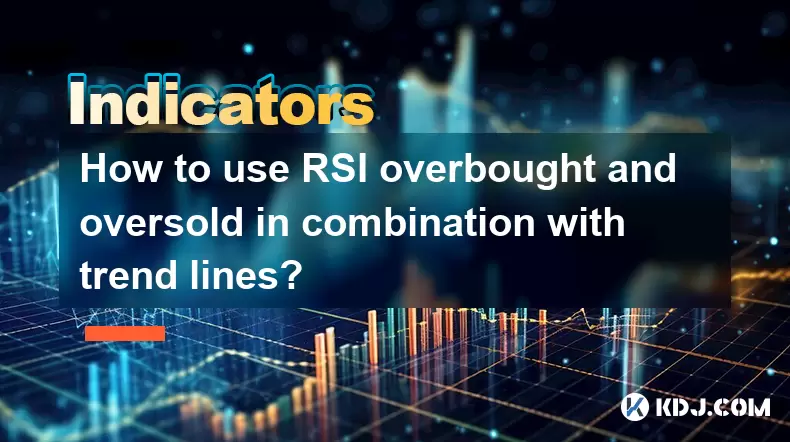
Trading in the cryptocurrency market involves understanding and utilizing various technical analysis tools to make informed decisions. One of the popular strategies traders use is combining the Relative Strength Index (RSI) with trend lines. This approach can help traders identify potential entry and exit points in the market. In this article, we will delve into how to effectively use RSI overbought and oversold signals in combination with trend lines to enhance your trading strategy.
Understanding RSI and Its Overbought/Oversold Levels
The Relative Strength Index (RSI) is a momentum oscillator that measures the speed and change of price movements. It is displayed as an oscillator (a line graph) that moves between zero and 100. Traditionally, an RSI reading above 70 is considered overbought, suggesting that the asset may be overvalued and due for a price correction. Conversely, an RSI reading below 30 is considered oversold, indicating that the asset may be undervalued and poised for a price increase.
To use RSI effectively, traders should monitor the RSI values in conjunction with price action. For instance, if the RSI reaches 70 and the price is at a resistance level, it might be a good time to consider selling. Similarly, if the RSI drops to 30 and the price is at a support level, it could be an opportunity to buy.
Drawing and Using Trend Lines
Trend lines are another essential tool in technical analysis. They are used to identify the direction of the market and can help traders determine potential support and resistance levels. To draw a trend line, you need at least two points of contact on the price chart. For an uptrend, connect the lows, and for a downtrend, connect the highs.
Here’s how to draw a trend line:
- Identify the trend direction (up, down, or sideways).
- For an uptrend, find at least two consecutive higher lows and draw a line connecting these points.
- For a downtrend, find at least two consecutive lower highs and draw a line connecting these points.
- Ensure the trend line touches the price action at least three times for confirmation.
Combining RSI and Trend Lines for Trading Signals
Combining RSI with trend lines can provide more reliable trading signals. When the RSI indicates an overbought or oversold condition, and the price is near a trend line, it can signal a potential reversal or continuation of the trend.
Here’s how to combine RSI and trend lines in your trading strategy:
- Uptrend and RSI Oversold: If the price is in an uptrend and the RSI drops to 30 or below, indicating an oversold condition, and the price touches the trend line, it could be a buying opportunity. The trend line acts as a support level, and the RSI suggests the price may rebound.
- Downtrend and RSI Overbought: Conversely, if the price is in a downtrend and the RSI rises to 70 or above, indicating an overbought condition, and the price touches the trend line, it could be a selling opportunity. The trend line acts as a resistance level, and the RSI suggests the price may decline.
Using RSI Divergence with Trend Lines
RSI divergence occurs when the price action and the RSI indicator move in opposite directions. This can provide additional confirmation for potential trend reversals when combined with trend lines.
- Bullish Divergence: If the price makes a lower low while the RSI makes a higher low, it suggests a potential bullish reversal. When this occurs near a trend line acting as support, it strengthens the buy signal.
- Bearish Divergence: If the price makes a higher high while the RSI makes a lower high, it suggests a potential bearish reversal. When this occurs near a trend line acting as resistance, it strengthens the sell signal.
To identify RSI divergence:
- Look for a new low or high in the price chart.
- Check if the RSI makes a higher low or lower high during the same period.
- Confirm the divergence with a trend line touch.
Practical Example of RSI and Trend Lines in Action
Let’s consider a practical example using Bitcoin (BTC) to illustrate how to use RSI and trend lines together.
Suppose Bitcoin is in an uptrend, and you draw a trend line connecting the higher lows. The price touches this trend line, and simultaneously, the RSI drops to 28, indicating an oversold condition. This scenario suggests a potential buying opportunity.
- Step 1: Identify the uptrend and draw the trend line.
- Step 2: Monitor the RSI for an oversold condition (RSI < 30).
- Step 3: When the price touches the trend line and the RSI is oversold, consider entering a long position.
- Step 4: Set a stop-loss below the trend line to manage risk.
- Step 5: Monitor the trade, looking for signs of a trend continuation or reversal.
In another scenario, Bitcoin is in a downtrend, and you draw a trend line connecting the lower highs. The price touches this trend line, and simultaneously, the RSI rises to 72, indicating an overbought condition. This scenario suggests a potential selling opportunity.
- Step 1: Identify the downtrend and draw the trend line.
- Step 2: Monitor the RSI for an overbought condition (RSI > 70).
- Step 3: When the price touches the trend line and the RSI is overbought, consider entering a short position.
- Step 4: Set a stop-loss above the trend line to manage risk.
- Step 5: Monitor the trade, looking for signs of a trend continuation or reversal.
Using RSI and Trend Lines in Different Time Frames
Traders can apply RSI and trend lines across various time frames, from short-term intraday charts to longer-term weekly or monthly charts. The key is to align your trading strategy with your time horizon and risk tolerance.
- Short-term trading: Use shorter time frames (e.g., 15-minute or 1-hour charts) to identify quick entry and exit points. RSI and trend lines can help you capture small price movements within the broader trend.
- Long-term trading: Use longer time frames (e.g., daily or weekly charts) to identify significant trend reversals and major support and resistance levels. RSI and trend lines can help you make more informed decisions about holding positions for extended periods.
FAQs
Q1: Can RSI and trend lines be used for all cryptocurrencies?
A1: Yes, RSI and trend lines can be applied to any cryptocurrency that has sufficient trading volume and liquidity. However, the effectiveness of these tools can vary depending on the specific market conditions and volatility of the cryptocurrency.
Q2: How often should I redraw trend lines?
A2: Trend lines should be redrawn whenever the price action invalidates the existing line. This can happen if the price breaks through the trend line or if new higher lows or lower highs are established, indicating a change in the trend.
Q3: What other indicators can be used in conjunction with RSI and trend lines?
A3: Other indicators that can complement RSI and trend lines include Moving Averages, Bollinger Bands, and the MACD (Moving Average Convergence Divergence). These can provide additional confirmation for entry and exit signals.
Q4: How can I manage risk when using RSI and trend lines?
A4: Risk management is crucial when using any trading strategy. Set stop-loss orders based on key support and resistance levels identified by trend lines. Additionally, consider the overall market conditions and your risk tolerance when determining position sizes and trade durations.
Disclaimer:info@kdj.com
The information provided is not trading advice. kdj.com does not assume any responsibility for any investments made based on the information provided in this article. Cryptocurrencies are highly volatile and it is highly recommended that you invest with caution after thorough research!
If you believe that the content used on this website infringes your copyright, please contact us immediately (info@kdj.com) and we will delete it promptly.
- Fartcoin (FART) Drops Nearly 13% in a Single Day on May 7, 2025
- 2025-06-07 12:50:16
- The Best Meme Coins to Join the Party and Ride the Wave
- 2025-06-07 12:50:16
- As Dogecoin (DOGE) and Shiba Inu (SHIB) Did in 2021, FloppyPepe (FPPE) Is Quietly Mirroring Their Early-Stage Technicals
- 2025-06-07 12:45:13
- Meme Coins Are the New Frontier: BTFD Coin, Pudgy Penguins' $PENGU, and $TRUMP Coin Are Making Waves
- 2025-06-07 12:45:13
- MicroStrategy (MSTR) stock is a risky bet on Bitcoin
- 2025-06-07 12:40:13
- Miley Cyrus previews new album for Spotify listeners, 'More to Lose' coming Friday
- 2025-06-07 12:40:13
Related knowledge
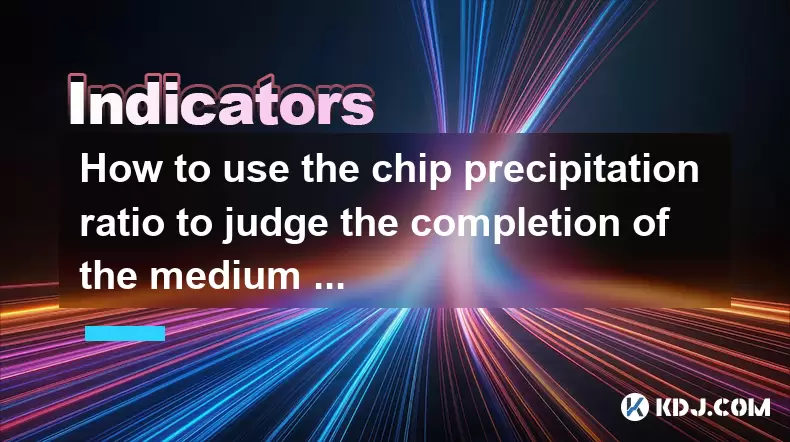
How to use the chip precipitation ratio to judge the completion of the medium and long-term bottom construction?
Jun 04,2025 at 03:36am
The chip precipitation ratio is a crucial metric used by investors to assess the accumulation of chips (or shares) at different price levels over time. This ratio helps in understanding the distribution of chips and can be a powerful tool for determining the completion of medium and long-term bottom construction in the cryptocurrency market. By analyzin...
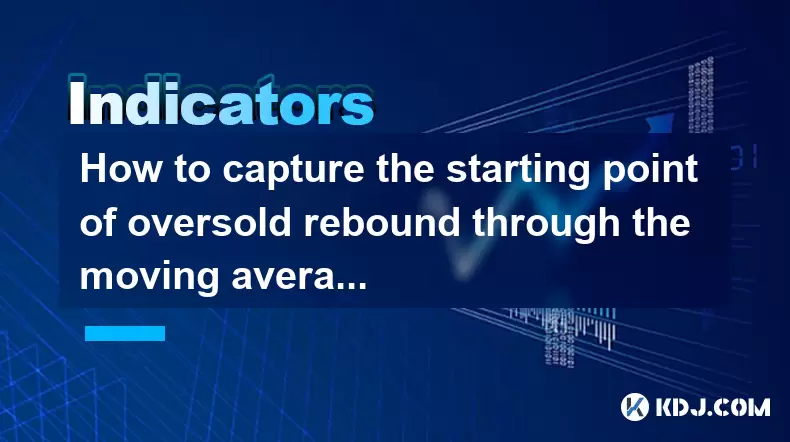
How to capture the starting point of oversold rebound through the moving average gravity reversal strategy?
Jun 04,2025 at 01:01pm
The moving average gravity reversal strategy is a sophisticated approach used by traders to identify potential entry points for buying cryptocurrencies when they are considered oversold. This strategy leverages the concept of moving averages to pinpoint moments when a cryptocurrency might be poised for a rebound. In this article, we will delve into the ...
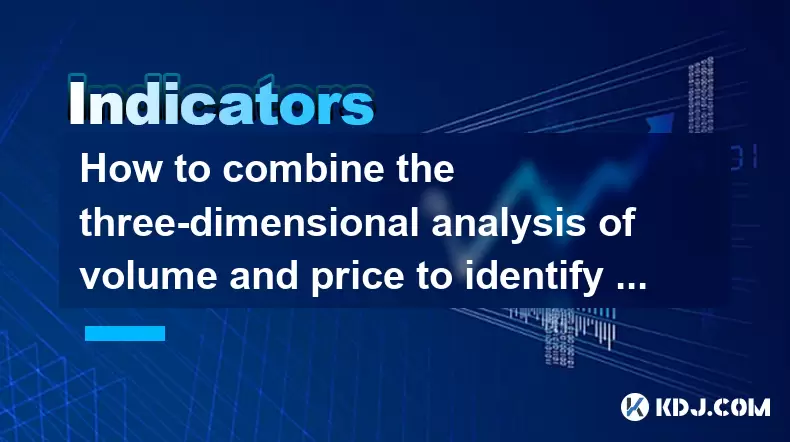
How to combine the three-dimensional analysis of volume and price to identify the golden buying point of breakthrough and retracement?
Jun 03,2025 at 11:42pm
In the dynamic world of cryptocurrencies, identifying the optimal buying points is crucial for maximizing profits and minimizing risks. One effective method to achieve this is by combining three-dimensional analysis of volume and price to pinpoint the golden buying points during breakouts and retracements. This article will delve into how to use this ap...
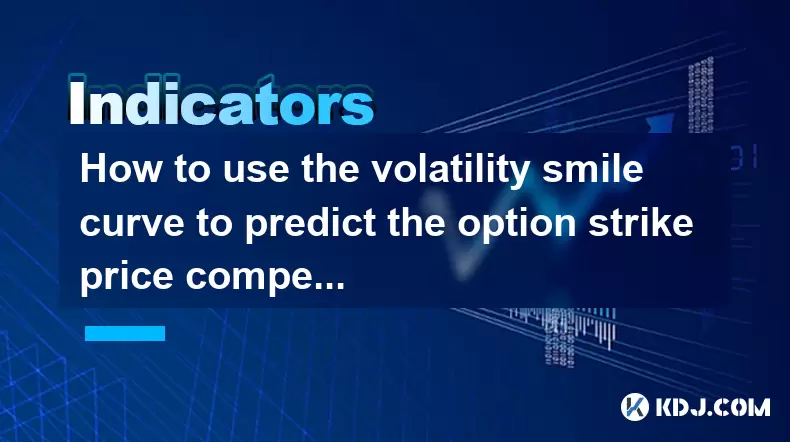
How to use the volatility smile curve to predict the option strike price competition area?
Jun 06,2025 at 01:01pm
The volatility smile curve is a graphical representation that shows the implied volatility of options across different strike prices for a given expiration date. It is called a 'smile' because the curve often takes the shape of a smile, with higher implied volatilities for options that are deep in-the-money or deep out-of-the-money, and lower implied vo...
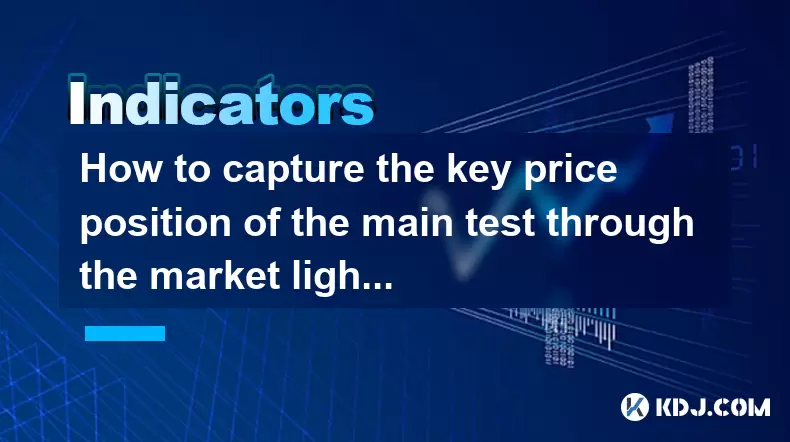
How to capture the key price position of the main test through the market lightning chart?
Jun 02,2025 at 06:07pm
Introduction to Market Lightning ChartThe market lightning chart is a powerful tool used by cryptocurrency traders to visualize price movements and identify key price positions. This chart type provides a detailed view of market activity, allowing traders to spot trends, reversals, and other significant price levels quickly. By understanding how to use ...
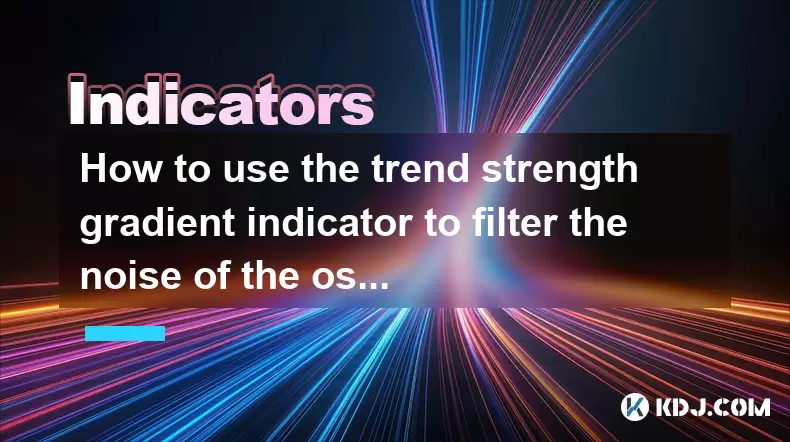
How to use the trend strength gradient indicator to filter the noise of the oscillating market?
Jun 06,2025 at 06:15pm
The trend strength gradient indicator is a powerful tool used by cryptocurrency traders to analyze market trends and filter out the noise that often accompanies oscillating markets. This indicator helps traders identify the strength of a trend, enabling them to make more informed decisions. In this article, we will explore how to effectively use the tre...

How to use the chip precipitation ratio to judge the completion of the medium and long-term bottom construction?
Jun 04,2025 at 03:36am
The chip precipitation ratio is a crucial metric used by investors to assess the accumulation of chips (or shares) at different price levels over time. This ratio helps in understanding the distribution of chips and can be a powerful tool for determining the completion of medium and long-term bottom construction in the cryptocurrency market. By analyzin...

How to capture the starting point of oversold rebound through the moving average gravity reversal strategy?
Jun 04,2025 at 01:01pm
The moving average gravity reversal strategy is a sophisticated approach used by traders to identify potential entry points for buying cryptocurrencies when they are considered oversold. This strategy leverages the concept of moving averages to pinpoint moments when a cryptocurrency might be poised for a rebound. In this article, we will delve into the ...

How to combine the three-dimensional analysis of volume and price to identify the golden buying point of breakthrough and retracement?
Jun 03,2025 at 11:42pm
In the dynamic world of cryptocurrencies, identifying the optimal buying points is crucial for maximizing profits and minimizing risks. One effective method to achieve this is by combining three-dimensional analysis of volume and price to pinpoint the golden buying points during breakouts and retracements. This article will delve into how to use this ap...

How to use the volatility smile curve to predict the option strike price competition area?
Jun 06,2025 at 01:01pm
The volatility smile curve is a graphical representation that shows the implied volatility of options across different strike prices for a given expiration date. It is called a 'smile' because the curve often takes the shape of a smile, with higher implied volatilities for options that are deep in-the-money or deep out-of-the-money, and lower implied vo...

How to capture the key price position of the main test through the market lightning chart?
Jun 02,2025 at 06:07pm
Introduction to Market Lightning ChartThe market lightning chart is a powerful tool used by cryptocurrency traders to visualize price movements and identify key price positions. This chart type provides a detailed view of market activity, allowing traders to spot trends, reversals, and other significant price levels quickly. By understanding how to use ...

How to use the trend strength gradient indicator to filter the noise of the oscillating market?
Jun 06,2025 at 06:15pm
The trend strength gradient indicator is a powerful tool used by cryptocurrency traders to analyze market trends and filter out the noise that often accompanies oscillating markets. This indicator helps traders identify the strength of a trend, enabling them to make more informed decisions. In this article, we will explore how to effectively use the tre...
See all articles

























































































